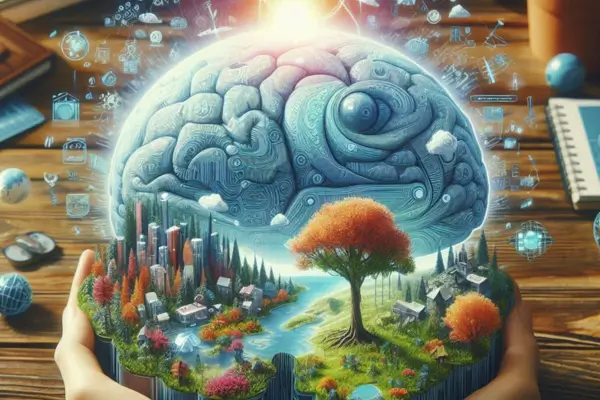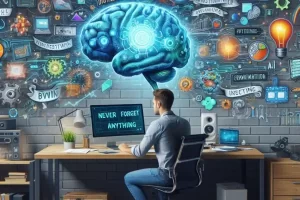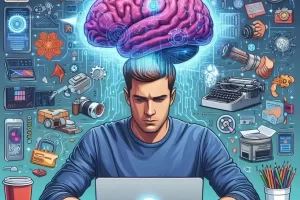Most people have goals, but very few have a clear system to define, track, and evolve those goals over time. Without structure, goals become vague wishes. But when stored, visualized, and supported by a second brain — especially one enhanced with artificial intelligence (AI) — your goals become part of your daily decision-making, reflection, and progress.
In this article, you’ll learn how to use your second brain to clarify your life goals, break them down into manageable actions, and use AI to help you review and realign consistently — so you stay focused and inspired.
Why Goals Need More Than a List
Setting goals is easy. Sticking to them is where most people struggle. The common problems:
- Goals are written once, then forgotten
- Progress isn’t tracked regularly
- Goals aren’t connected to daily actions
- You outgrow goals but never update them
A second brain solves this by becoming your goal memory. And AI enhances it by becoming your goal coach — helping you stay aligned, track patterns, and adjust as needed.
Define Your Key Life Domains
Your goals should reflect the areas of your life that matter most. These will vary for each person, but common examples include:
- 💼 Career & Business
- 🧠 Learning & Skills
- 🧘 Health & Wellness
- 💬 Relationships
- 🎨 Creativity & Passion
- 💰 Finances
- 🧭 Purpose & Contribution
- 🧘 Mental & Emotional Growth
In your second brain (e.g., Notion, Obsidian, or Tana), create a dashboard or database for each domain.
Ask AI:
“Based on my journal entries, what life domains do I write about most?”
“Suggest goal categories based on my recent reflections and values.”
Set SMART Goals — With AI’s Help
Use the SMART framework (Specific, Measurable, Achievable, Relevant, Time-bound) to set goals that are clear and actionable.
Let AI help you refine your goals:
- “Rewrite this goal to be SMART: ‘Get healthier this year.’”
- “How can I make this financial goal more measurable?”
- “What milestones would make this learning goal feel achievable?”
AI ensures that your goals are real, not vague.
Break Down Goals Into Projects and Tasks
Your second brain should connect high-level goals to day-to-day action.
Create a structure where:
- Each Goal links to one or more Projects
- Each Project contains Tasks
- Each Task is assigned a due date or recurring schedule
Ask AI to help:
“Break this goal into 3 projects and 10 initial tasks.”
“What are the first steps to move this goal forward?”
“Based on my time availability, how long will this goal take?”
Now you’re not just dreaming — you’re building.
Create a Goal Review System
Reviewing your goals regularly helps you:
- Stay focused
- Adjust direction
- Celebrate progress
- Avoid drift
Set up a weekly or monthly review template in your second brain, with prompts like:
- What progress did I make this week?
- What got in the way?
- Is this goal still aligned with my values?
- What will I do next?
Ask AI:
“Summarize my progress on this goal in the last 30 days.”
“What goals have stalled? Suggest ways to re-ignite them.”
“Which goals no longer align with my current vision?”
Use AI to Identify Patterns and Priorities
AI can analyze your habits, tasks, and notes to find patterns you may not notice.
Examples:
- “Which of my goals am I naturally making progress on?”
- “Where am I spending effort without results?”
- “Which tasks most often get postponed?”
You can also ask:
“Based on my work this quarter, what goal should be my #1 focus?”
“Which goals feel urgent vs. important?”
This helps you work smart, not just hard.
Visualize Your Goals with Dashboards
Build a goal dashboard that shows:
- Active goals and their status
- Linked projects and tasks
- Recent activity
- Progress bars or checklists
- Reflections and milestones
Let AI help populate or update it:
“Update my dashboard with completed milestones.”
“Show goals where I’ve made no progress in the last 2 weeks.”
“Generate a quarterly goal report with wins and adjustments.”
Now your second brain becomes a goal cockpit, not a note graveyard.
Evolve Your Goals as You Grow
As you change, your goals should too. Your second brain is not just for goal achievement — it’s for goal evolution.
Use AI to support this process:
“Based on the last 6 months of journal entries, how has my definition of success changed?”
“Which goals no longer reflect my values?”
“Suggest new goals that align with my recent growth.”
This keeps your life aligned with who you are now, not who you were then.
Real-Life Example: The Evolving Creator
Let’s say you’re a content creator with goals across business, health, and creativity.
Your second brain includes:
- SMART goals like “Launch a course by Q3” or “Write 3 blog posts/month”
- Linked tasks and project timelines
- A dashboard showing visual progress and reminders
- AI-generated weekly reviews that highlight progress and suggest course corrections
- A monthly check-in where AI analyzes your journal for shifts in motivation or clarity
Now, your goals aren’t just listed — they’re lived, tracked, and aligned with your daily life.
Final Thoughts: Goals Aren’t Just Plans — They’re Systems
Success isn’t about setting perfect goals. It’s about building a system to support them — and reviewing that system consistently.
With your second brain and AI:
- Your goals become visible and connected
- Your tasks flow from your vision
- Your progress is trackable
- Your evolution is intentional
Let your second brain remind you what matters. Let AI keep you aligned. And let your goals become part of your everyday momentum.




